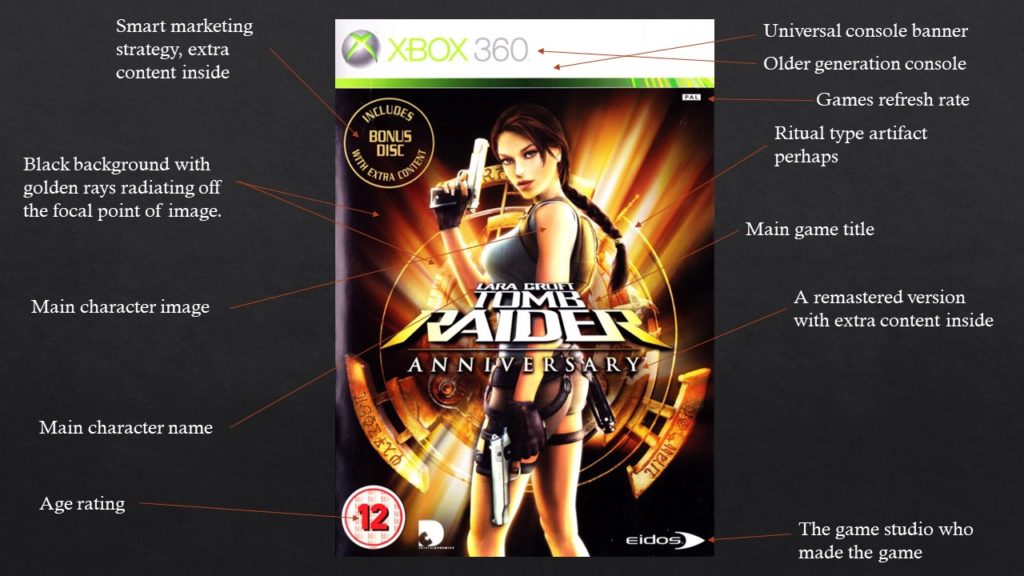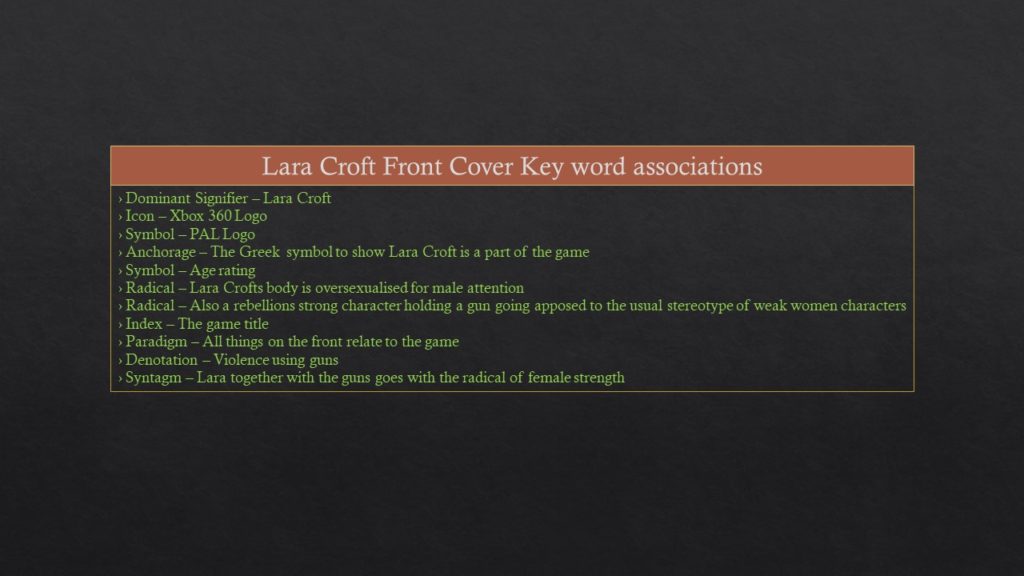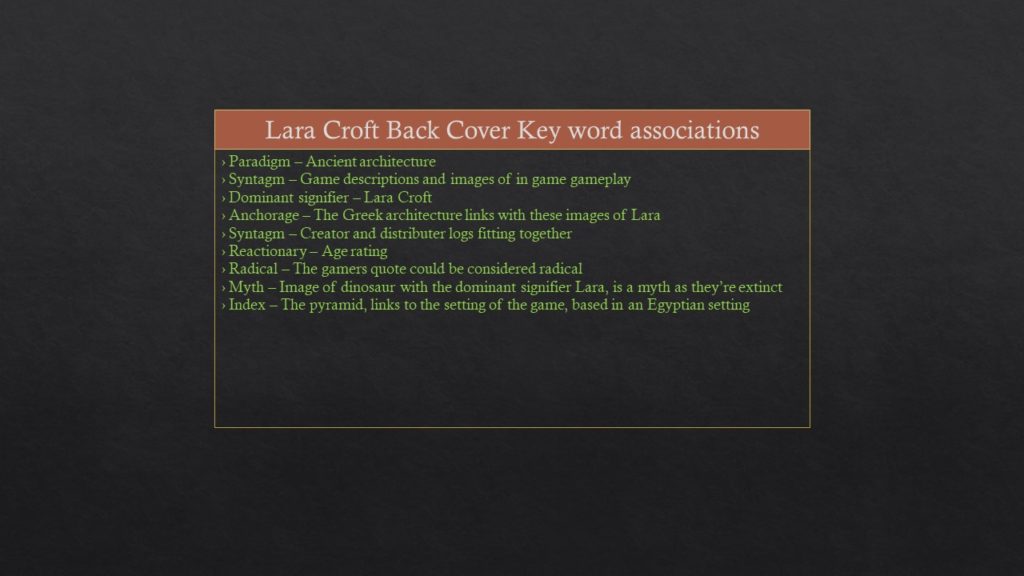For my video game cover I want a bold background it will include the brands logo along with the company of the gaming manufacturer. I will include the PS4 logo along the top above the initial background which will include a desert with a orange sky and a pyramid in the background, this is because I would like my game to consist of a set difficult highly skilled tasks for the levels based inside of the pyramid that need completing to move higher up in the game. I will be using a female character dressed in clothing that does not sexualise her and she will be able to do the tasks efficiently, I want to do this to go against the sexist stereotype that women get from the gaming industry from being sexualised and them being seen as weaker than male characters.
Category Archives: Exam Prep
Filters
Representation
How women are sexualised in video games, it largely remains unclear whether sexualized video games can have an impact on attitudes toward women. Often game designers change the camera angles to sexualise the female characters body shape and extenuate their walk to show off their purposefully widened hips. They also advertise the game covers with the female characters contorted in ways which can show off their whole body, they do this to appeal to men which entices them to buy the game. Laura was the women who came up with the idea about the male gaze as they were many issues with gender in film and other media. She is a feminist and says that films are made in the view of a heterosexual men trying to sexualise a woman by camera angles, zoom-ins or other strategies. John Berger devised the theory called “Ways of seeing” suggesting that the way woman are seen by men and the way they are taught to see themselves is wrong and creates a bad relationship between the two genders.
Representation – the male gaze
The male gaze refers to the way in which women are typically presented in media often through the eyes of the straight male. The women being portrayed are more than often presented as sexual objects for the pleasure of male viewers. For example, in video games, A women’s sexual image is always seen as the most dominant aspect of her character as a pose to her actual purpose in contrast to men who’s bravery and selflessness are always the most important aspect of their character.
Born in 1941, Laura Mulvey is a feminist film maker and theorist from Britain who is commonly known for her work on the ‘Male Gaze’. She wrote the essay in 1975 which highlighted the misogynistic way women are presented throughout media – often through the eyes of the straight male in order to please the straight male.
John Berger, an English art critic born in 1926, was known for his television series and essay on art criticism called ‘Ways of Seeing’ which won the Booker prize in 1972. In the essay, he illustrates the issues with how women are presented in media and how they are overly objectified specifically for the pleasure of the straight man.
| LEVELLING UP REPRESENTATION: DEPICTIONS OF PEOPLE OF COLOUR IN VIDEO GAMES | -“2015 study… higher percentage of teens of colour playing games , representation is extremely important but… has been lacking” -“regarding asian women, they are often sexualised… placing great focus on revealing clothes, large exposed breasts, and barely there underwear.” |
| WHY DIVERSITY MATTERS IN THE MODERN VIDEO GAMES INDUSTRY | – “Play Station recently sponsored Pride London, providing a joyous, hugely colourful presence in the parade” – “Xbox got a new feature in settings called co-pilot” |
| VISUAL PLEASURE AND NARRATIVE CINEMA – ACADEMIC PAPER BY LAURA MULVEY | – “she falls in love with the main male protagonist and becomes his property, losing her outward glamorous characteristics, her generalised sexuality, her show-girl connotations” – “Once he actually confronts her his erotic drive is to break her down and force her to tell by persistent cross questioning” |
| FEMINIST FREQUENCY | – “As a trope the damsel in distress is a plot device in which a female character is placed in a perilous situation from which she cannot escape on her own and must be rescued by a male character, usually providing a core incentive or motivation for the protagonist’s quest.” – “we explore the Women as Background Decoration trope…These sexually objectified female bodies are designed to function as environmental texture while titillating presumed straight male players.” |
CSP 1&2: TOMB RAIDER AND METROID
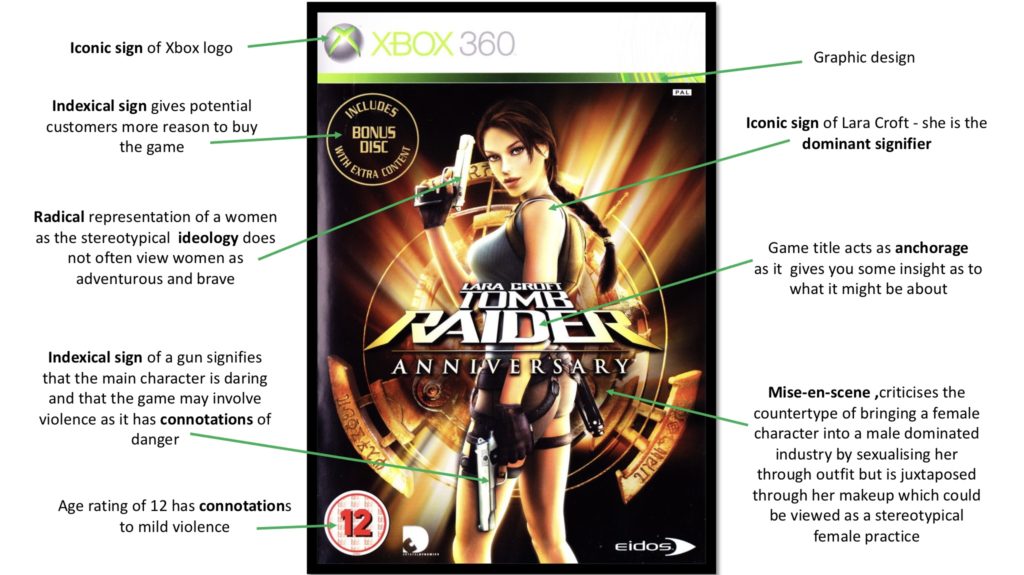
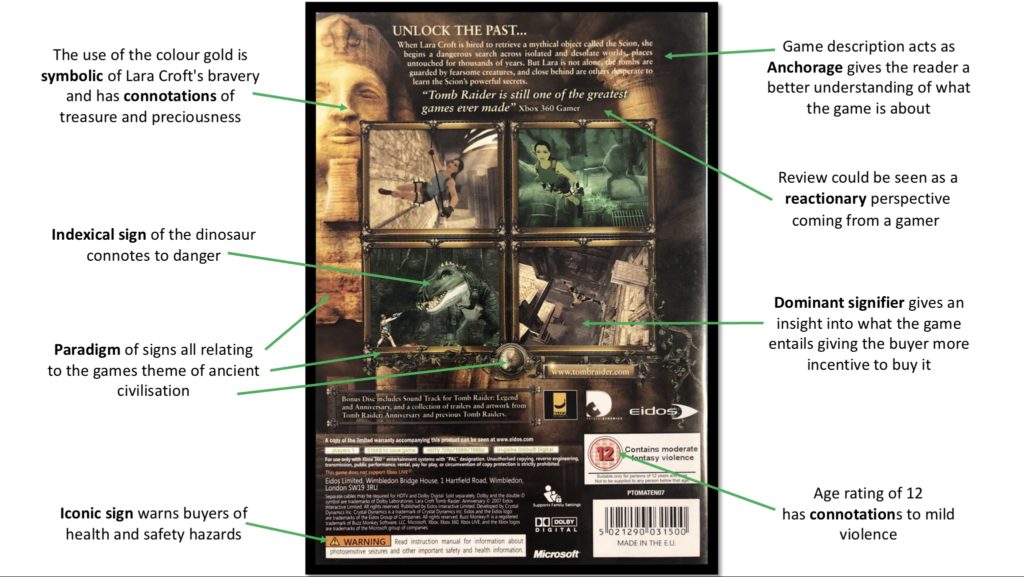
| Language | Todorov most narratives follow basic structure: beginning/equilibrium, middle/disruption, end/new equilibrium -condensed equilibrium – immediate disruption by ‘fearsome creatures’ -disruption – hired to find ancient artefact -new equilibrium – defeats Natla and retrieves scion -sub plots – Puzzles block progress through the levels until Lara solves them by activating switches or finding and using keys hidden within the area. These involve avoiding traps and timed environmental elements – quest-narrative conventional of quest narrative Neale genre is is a mechanism which attracts audience based on their predictable expectations – ‘structured around a repertoire of elements’ presence of unconventional elements which maintain audience enjoyment first person shooter/adventure game conventional- elemts of fighting and violence, quests, puzzles, boss battles etc… unconventional- female protagonist Baudrillard in postmodern culture the boundaries between the ‘real’ world and the world of the media have collapsed and that it is no longer possible to distinguish between reality and simulation – media images have come to seem more ‘real’ than the reality they supposedly represent (hyperreality) “It is no longer a question of imitation… It is a question of substituting the signs of the real for the real” (The Precession of Simulacra 2) elements of TR represent a simulacrum of reality – LC is a British archaeologist-adventurer and is hired by a wealthy businesswoman Jacqueline Natla to complete a job however elements are too unrealistic to be considered hyperreal therefore dont blur the lines between reality and simulation – the manoeuvres LC is able to do, the fact that if she dies the player is able to re spawn, certain boss battles include creatures that dont exist such as a t-rex |
| Representation | protagonist represented as as typical hero: -powerful as holds a two guns -clever as has to solve puzzles -independent as fights bosses on her own therefore not typical damsel in distress boss is also female – game represents females in dominant positions female – unconventional as it is normally male characters who play the dominant role – maybe due third wave feminism however stereotypical representation of women – sexualised through lack of clothing, body pose displays both bottom and breasts to appeal to male audiences video game industry is also male dominated also likely due to the production process – when the og game came out in 1996 difficult to make it distinguishable between male/female characters so often accentuated features game was very ahead of its time and graphics were extremely realistic for a video game – offered detail representations of exotic locations (link to Baudrillard) post-colonial representation – white upper class characters exploring foreign locations in search of treasure and killing off locals in the process reflects racists portrayals of ethnic minorities in culture industries at a time of less progression ie 1996 maybe in order to target western audiences – representing white people as powerful and clever the way in which croft is presented impacts the players sense of identity – they feel powerful, dominant, clever van Zoonen in mainstream culture the visual and narrative codes that are used to construct the male body differ from how female bodies are represented display of women’s bodies as objects to be looked at is a core element of western patriarchal culture designers are aware their key target audience is western men, therefore use a female protagonist to their advantage by sexualising her – to feed the voyeuristic tendencies of the patriarchy shown through her stance – which accentuates both her breasts and bottom shown through her clothing – short, tight Gauntlett media provide us with ‘tools’ or resources that we use to construct our identities modern media offers us a more diverse range of stars, icons and characters from whom we may pick and mix different ideas reflex identity construction: audiences can ‘borrow from these stories when shaping our narratives of the self’ by representing people are are traditionally under represented in the industry – women – people from that group are able to identify more can construct identity from her sense of independance, strength, bravery etc… also attracts a female audience which overall makes the company more money |
| Industry | PRODUCTION Release date – June 2007 production – Eidos Games (named as Britain’s most successful company in 1999), Eidos Interactive ltd, part of SCi Entertainment Group PLC (now owned by Square Enix) developer – Crystal Dynamics/ Square Enix, 2013) platforms – PS2/3/4, PC/MAC, Xbox/360/1, Wii OUTCOME Sold 7 million copies of the first game and 16 millions copies worldwide of the first 3 games Tomb Raider II, III, IV, Chronicles, The Angel of Darkness and Legend all followed as well as films Over 28 million copies of the Tomb Raider series sold worldwide REGULATION Tomb Raider has been regulated as an 18 by PEGI because of: Extreme Violence Strong Language You are able to interact with other players online Hesmondhalgh ‘risky business’ makes us aware of why companies want larger market share (link to C&S), claims: -audiences tastes are continuously adapting which makes predicting their needs and wants nearly impossible – online video games limited consumption capacity meaning the huge sums of money invested in creating media products result in only a one time reward – buy the console once and dont have to buy it again, once game is complete there is nothing else to consume risks reduced by: -remake – recycling previously successful archived material requires less time, effort and money when it comes to the production and instantly engages an audience through nostalgia-based appeals (same character, same underlying plot) while also rebranding content so that it fits the tastes of contemporary audiences (better graphics) -also use of serialisation – use of sequels, prequels, spin-offs etc… requires less investment in marketing activities to create audience visibility therefore allowing producers to maximise their investments – many new versions of TR have come out since |
| Audience | audience is likely to be pre-sold – played the og 1996 tomb raider audiences who enjoy adventure games mythical creatures appeal to fantasy audiences objectification of protagonist appeals to male audiences however can also make female audiences feel empowered as it was one of the only games who represented women in power Gerbner examines the lasting effects of media – Looking primarily at the relationship between violence on television and violence in society EG the more television people watch, the more likely they are to hold a view of reality that is closer to television’s depiction of reality For many individuals the distorted and partial reality portrayed on television represents what the world is ‘really’ like (could like to Baudrillard) TR depicts mild violence which could influence the way in which audiences view the real world – especially due to real aspects of the video game (link to baudrillard) the unrealistic and violent elements may cause audiences to view reality in the same way the game depicts it McQuail and Blumler uses and gratifications – active selection believe consumers have a free will to decide how they will use the media and how it will effect them and therefore recognises the decision making process the audience take, highlighting how they seeking specific uses and gratifications when consuming media audience’s who are fans of adventure genre may want to IDENTIFY with ideas presented top them or seek a new IDENTITY – EG players may want to adapt/identify with LC adventurous lifestyle and aspire to be like her first person shooter perspective makes this even more realistic |
| Context |
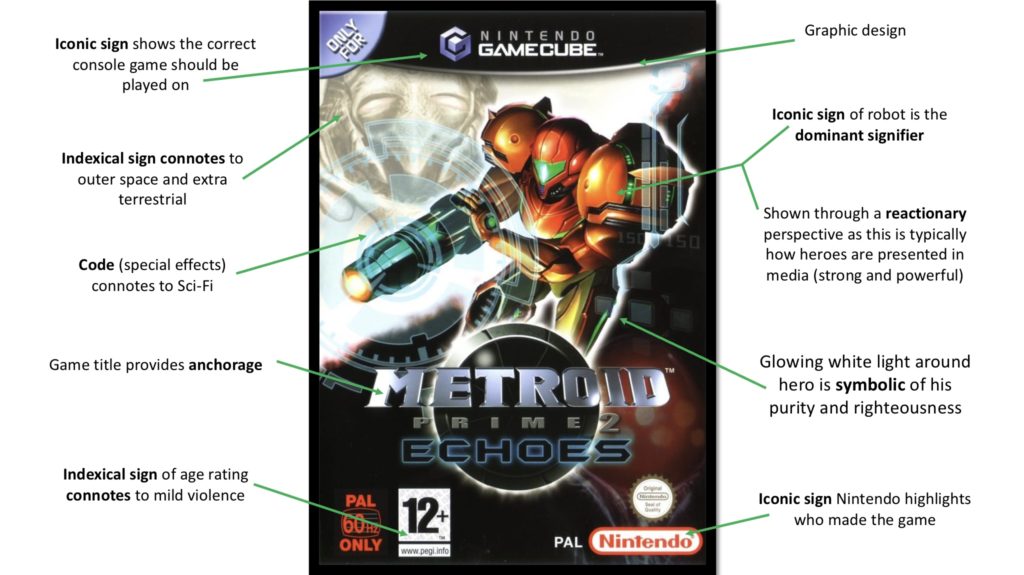
| Language | |
| Representation | |
| Industry | |
| Audience | |
| Context |
CSP 1 & 2: tomb raider and metroid

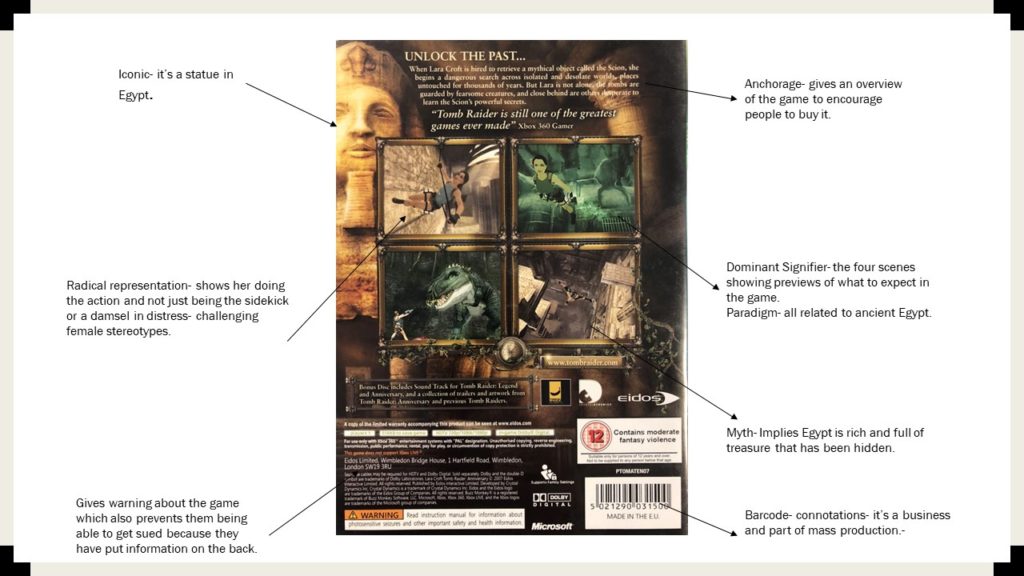

Media banner

SEMIOTICS – CS PIERCE
An iconic sign: In my banner I have included text and images that all relate to media. Big text that says media study’s and the background is of different social media platforms
An indexical sign: In my banner I used images like radio, billboard, cinema and newspaper which you can access different types of media like the news on the radio, a film at the cinemas and an advert on a billboard.
A symbolic sign: My banner includes different colours and shapes. My background is of different social media apps and they are all in hexagonal shapes. My banner includes bold writing of media studies in two different colours, white and yellow.
game reprentation



Game Representation

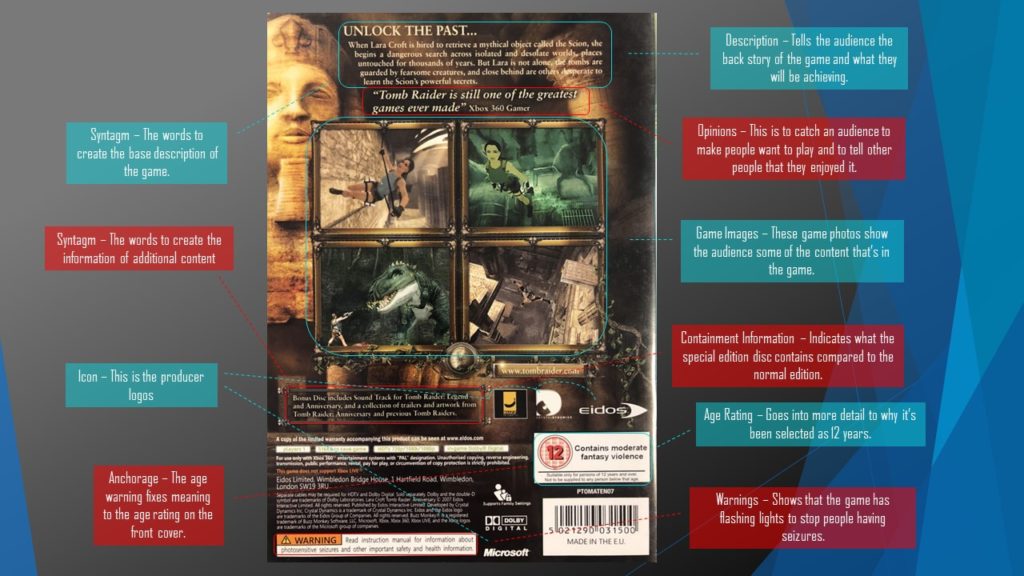
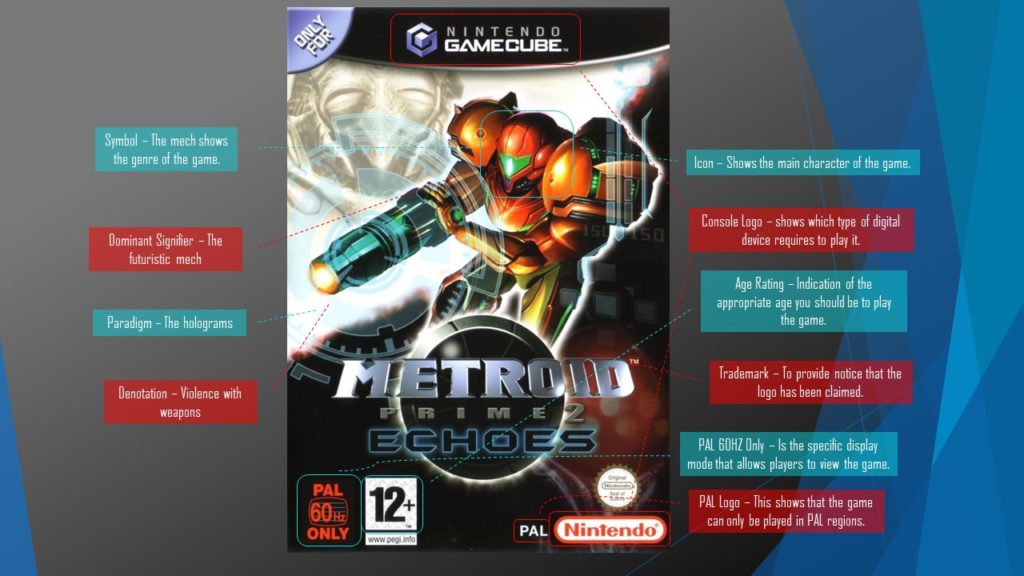
Game inspection
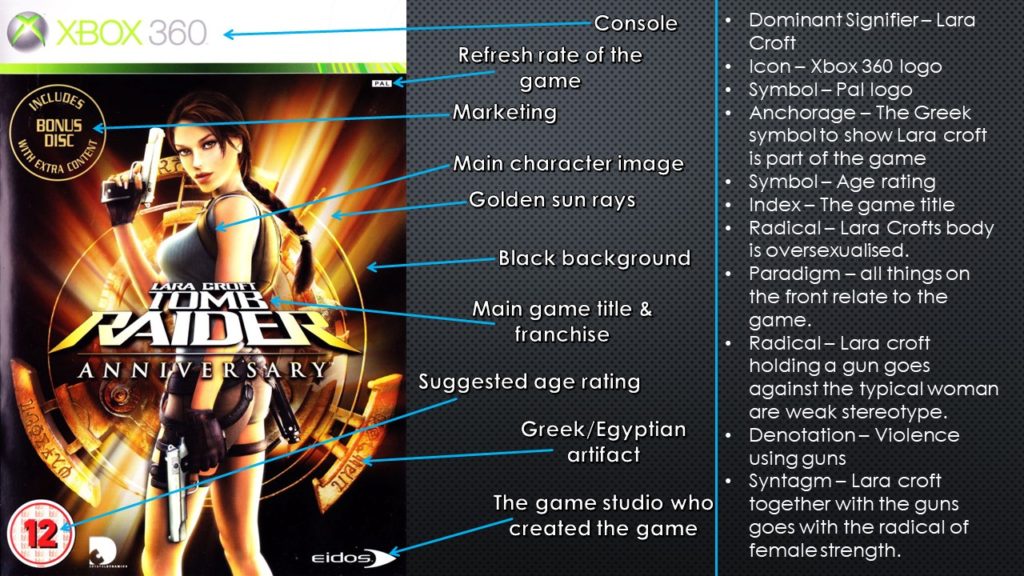


representation
